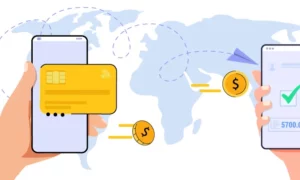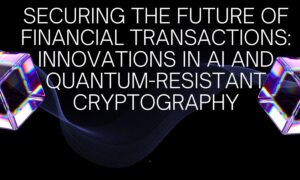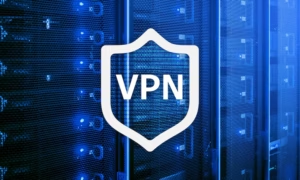By Almond FinTech
The financial establishment is facing an existential crisis: cross-border payments aren’t built for the speed of modern business. As global commerce surges—set to reach $50 trillion by 2032—the financial systems that are meant to support that growth are showing their age. For a lot of businesses, sending money across borders is still a confusing, drawn-out process that feels stuck in the past.
Much of this stems from the limitations of legacy systems still in use. SWIFT, the backbone of many cross-border transactions, was created in a time when trade moved by freight, not fiber optic cables. Today’s payments often snake through multiple correspondent banks, racking up fees, slowing down settlements, and leaving businesses in the dark.
The Day-to-Day Struggles of Global Payments
Through our work with businesses across various sectors, we’ve seen this firsthand. A Vietnamese manufacturer needs to pay a German supplier. It should be simple, but the payment hops from bank to bank, each taking their cut and stalling for days.
Multiply that by hundreds of transactions, and the problem becomes obvious. Timelines are broken by numerous delays. Endless fees eat into margins. And the lack of transparency adds unnecessary complexity to sophicated supply chains.
This isn’t just inefficiency—it’s economic friction that’s bleeding companies dry.
Digital Assets: Quietly Changing the Rules
While cryptocurrencies often make headlines for their volatility and speculation, there’s a quieter story unfolding behind the scenes. Blockchain-based payment rails are demonstrating something traditional banks have struggled to deliver: instant, transparent, and cost-effective international transfers.
Companies are discovering that digital assets aren’t just for investors. Stablecoins provide the speed of cryptocurrency with the kind of stability that businesses can actually count on. Blockchain networks provide something SWIFT doesn’t: instant transfers and real-time tracking from end-to-end.
The Regulatory Reality Check
Innovation doesn’t happen in a vacuum, and all this unfolds within a maze of regulations. Financial organizations operate under strict—and often fragmented—regulatory frameworks. This patchwork of compliance requirements is something that newer blockchain solutions must navigate carefully.
Traditional banks often use this complex regulatory puzzle to their advantage. They argue that their established relationships provide a stability and level of trust that newer technologies can’t match. They’re not entirely wrong—regulatory uncertainty remains a significant challenge for businesses considering adopting newer methods.
What’s Really Fueling the Shift?
It’s not just market growth—it’s a deeper change in how businesses operate. Remote work has opened up a global labor market. E-commerce has eliminated geographical boundaries. Today’s supply chains stretch across time zones the way they used to stretch across towns.
With that much global interconnection, payment systems need to keep up, not in days, but in moments. When a U.S. startup needs to pay a freelancer in Eastern Europe, or when an e-commerce platform must settle invoices across three continents, waiting several business days just doesn’t work.
The Fintech Advantage
Emerging financial technology firms aren’t just updating old systems—they’re building new ones from the ground up. Many are designing platforms that connect directly to local banking systems across the globe.
This means fewer bottlenecks, fewer intermediaries, and fewer surprises. Businesses can integrate once and tap into a global payment network that handles currency exchange, compliance, and settlement—automatically and in real time.
Getting Past the Hype
Yes, blockchain gets its fair share of buzzwords. But strip those away, and the core idea is simple: remove friction. Every step in a traditional payment chain adds cost, time, and risk. Technology that can reduce those pain points doesn’t just sound good, it delivers genuine business value.
However, “disruptive” technologies often overpromise and underdeliver. The payments industry has seen more than its share of overhyped platforms. Many have stumbled on regulatory compliance, risk management, or customer trust. Innovation is one thing; long-term reliability is another.
Where Almond FinTech Stands
At Almond FinTech, we believe in connection—not replacement. It’s not about tearing down the old system. It’s about creating flexible pathways that bring traditional banking and new technologies together. Our platform demonstrates that businesses don’t need to choose between stability and innovation—they can have both.
Forward-thinking businesses are already taking this hybrid approach—experimenting with blockchain-based tools while maintaining traditional banking relationships. This kind of flexibility helps businesses stay agile and better equipped for whatever the future throws their way.
What Tomorrow’s Economy Really Needs
That $50 trillion projection? It’s more than just a milestone. It’s a stress test for the systems handling those transactions. Can the infrastructure we rely on today support the speed, volume, and complexity of tomorrow’s commerce?
The real question isn’t whether blockchain will dethrone SWIFT. It’s whether the global financial system can evolve fast enough to meet the demand of modern international commerce—and whether businesses can afford to wait around for it.
At Almond FinTech, we’re not waiting. We’re helping companies move smarter, faster, and with more confidence—bridging the gap between what’s possible and what’s practical.



































